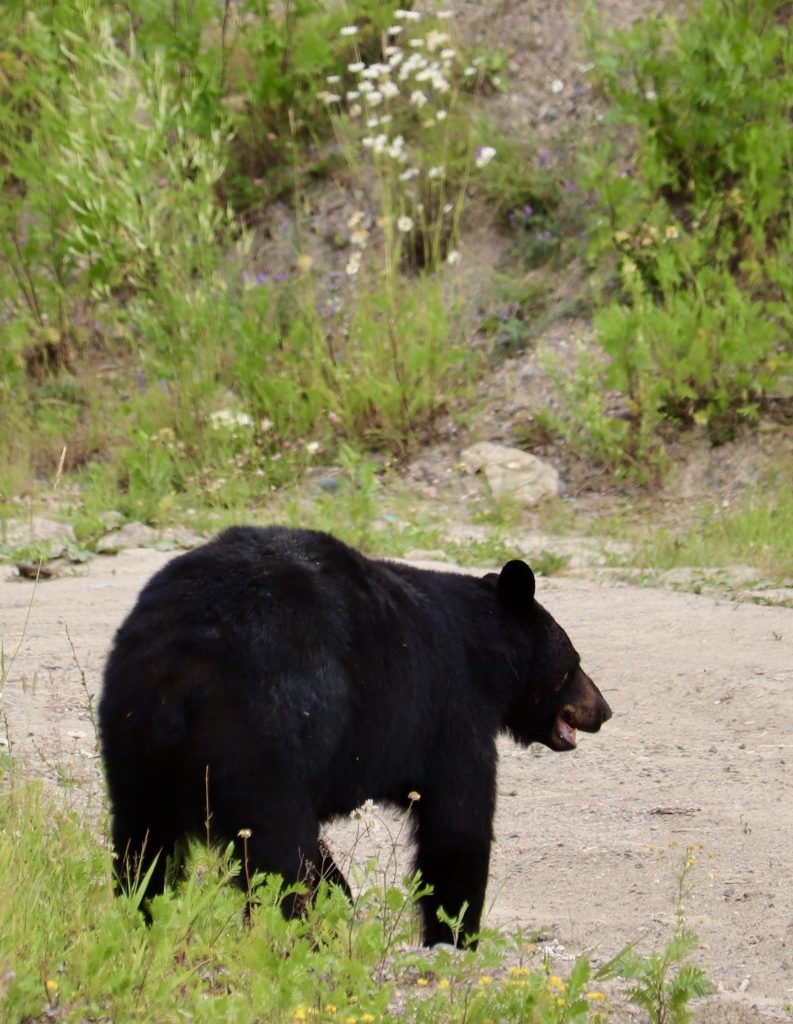
Following a typically cumbersome and mildly frustrating drive through the Greater Toronto Area (GTA), my biology brain began perseverating on how rough it must feel for a bear or a moose who accidentally finds itself too close to this urban mecca.
What is too close? That depends on what perspective you indulge in. Black bears, moose, wolves, elk and wolverines used to occupy Toronto and southern Ontario on the cusp of the 1900s, broadly speaking. In precolonial times, these magnificent mammals were quite at home in the area’s mixed forests — a complex salad of deciduous (oak, maple, ash and beech) and coniferous (pine, hemlock, cedars and spruce) trees, and a never-
ending access to fresh water.
The difference is that these forests existed with unimaginable contiguity and quality. The ecosystems were relatively undisturbed, and provided a connected gradient from south to north. Our deciduous dominant forests in Ontario’s extreme south blended into the St. Lawrence mixed forests of central Ontario before turning into a spruce abyss in the north. Highway 401 wasn’t in its gridlocked existence, and the GTA wasn’t sprawling around the corner towards Niagara. Southern Ontario is an area where different biomes (broad geographical areas with an identifiable set of flora and fauna) collided.
So, why are these mammals only found up north nowadays? And, how do they end up down south, and make the news on occasion?
Some animals come packaged with a DNA blueprint that enables their survival as a population. For example, female black bears statistically prefer a territorial range of 10 to 40 square kilometres, and males are upwards of 100 square kilometres. Do we have that type of covered habitat in southern Ontario too often these days? Absolutely not, although, we once did.
As I drive north of the GTA to head to a cottage for a fun weekend, I see the wood density increase once past Barrie. There are simply larger swaths of habitat, and they benefit large mammals that require such spatial needs. It makes me wonder how far south the odd bear, or other large mammals with similar space requirements, haphazardly meander down toward the GTA and other humanly populated areas.
What’s fascinating about nature is that it knows no hard boundaries. According to the province and other independent sources, black bear populations in Ontario “stop” at Barrie, Collingwood, and Owen Sound as their southern limit. Is this a coincidence? Not when you line up the maps of their perceived range and where Ontario’s most densely populated regions are.
So, how did a black bear end up in London or Goderich in July of 2020? And, how did a moose find its way dashing across busy highways in Markham in 2017?
I went straight to Google Earth and tried to assess the potential path, or habitat corridor, that allowed these magnificent creatures to land in the local news in southern Ontario.
For the Goderich and London incidents, which occurred within three days of each other, I speculate that the black bears moved down the Lake Huron coast from the Bruce Peninsula, where they have a reasonable and stable population. Southhampton is the rare but not impossible location in this neck of the woods where you could see a black bear — it is the last, truly large coat of dark green on the landscape cloaked in agriculture and small towns.
What happens next nobody will ever know. It is really difficult to identify a solid habitat corridor from here towards Goderich, and especially London. However, there must have been just enough. To be clear, these habitat passageways are narrow in nature, and could never biologically support a sustained black bear population. They did, however, provide a risky but plausible opportunity for a large black animal to make its way southbound without getting noticed by humans. This doesn’t happen every day, so there must have been a bit of luck and odds involved. Funnily enough, animals have no concept of the term luck, and it happened to be on their side to arrive in the locations they did safely.
What about the Markham moose on the loose? Was it really loose, though? Moose, like bears, are typically only spotted north of Barrie. Markham lies nestled as an extension of the GTA on the northern outskirts, but is still nowhere near the wild ecosystems north of Barrie.
According to Google Earth, I see a strand of consistent forest and wetland coverage branching down from Beaverton to Newmarket, and even this is outside of the prescribed range. Moose are not staying and reproducing in these woods, despite their depth, and that’s because they are fragmented and isolated woodlands. How the moose then meandered into the residential stretch of Markham, an area of no permanent moose population next to Canada’s largest city, is a an impressive mystery.
Like the black bears who wandered into Ontario’s deep south, there was an element of luck involved, and a miracle that nobody spotted the animal before it got there.
For me, there are two takeaways to these stories of southern wanderers.
First, it emphasizes the importance of habitat corridors. These are the remaining natural tracts of land which thread the needle between human dominated landscapes, allowing animals to move safely without disturbance. In the bigger picture, the connectivity, although weak, is an available option for them to spread their genetics across a broader landscape and prevent inbreeding islands. This has major value for conservation for moose, moles, and mudpuppies alike.
Habitat corridors are like WiFi. Even with a weak connection, you can still send the email and get things done.
Second, there is a symbolic tale that saddens me. These animals are wandering home where we’ve built our houses. Historically, these grandiose and iconic animals lived and thrived down here in southern Ontario. There would be something poetically disheartening about retuning home to find out it isn’t home anymore.